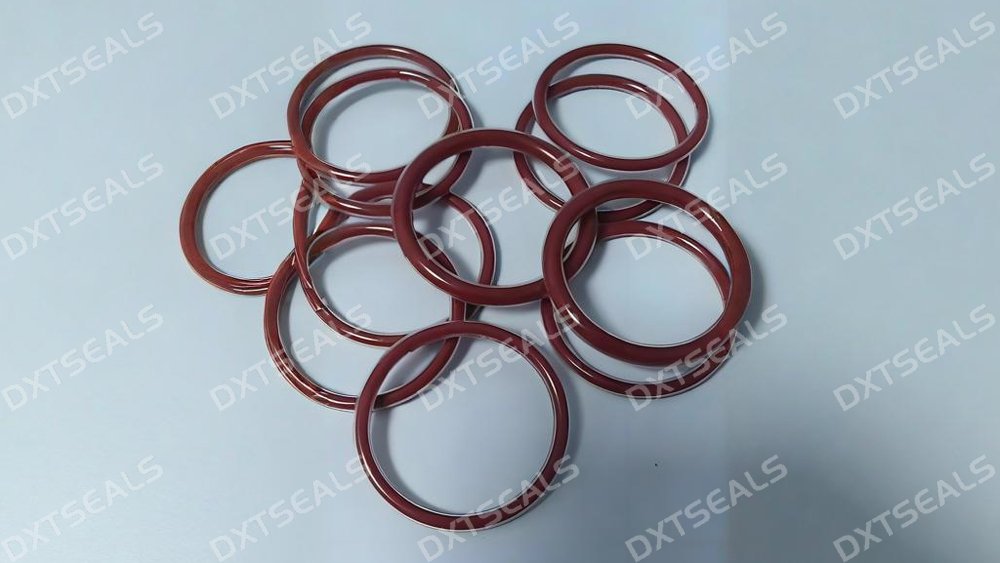
When it comes to industrial applications requiring excellent chemical resistance, low friction, and long-term stability, PTFE (Polytetrafluoroethylene) often outperforms conventional plastics like PE (Polyethylene), PP (Polypropylene), or POM (Polyoxymethylene). This article by DXTSEALS explores the unique characteristics of PTFE compared to standard plastic materials, with a focus on their roles in sealing applications.
🔬 What Is PTFE?
PTFE is a high-performance fluoropolymer known for its extreme chemical inertness, low coefficient of friction, and excellent thermal stability. Commercially known as Teflon®, PTFE is non-stick, hydrophobic, and highly resistant to heat and solvents.
Key Properties of PTFE:
-
Temperature resistance: -200°C to +260°C
-
Chemical resistance: Nearly universal
-
Coefficient of friction: Very low (≈0.05–0.10)
-
Non-stick and self-lubricating
-
Excellent dielectric properties
🔍 PTFE vs Common Plastics: Performance Comparison
| Property | PTFE | PE (Polyethylene) | PP (Polypropylene) | POM (Polyoxymethylene) |
|---|---|---|---|---|
| Temperature Resistance | -200°C to +260°C | -50°C to +80°C | 0°C to +100°C | -40°C to +120°C |
| Chemical Resistance | Excellent | Fair | Good | Moderate |
| Friction Coefficient | Very low (≈0.05) | Moderate | Moderate | Low |
| Mechanical Strength | Moderate | Low | Moderate | High |
| Cost | High | Low | Low | Moderate |
| Electrical Insulation | Excellent | Good | Good | Good |
Summary:
PTFE offers superior chemical and thermal resistance, making it ideal for critical environments where other plastics may degrade or fail.
🔧 Sealing Applications of PTFE
Due to its resistance to extreme conditions, PTFE is widely used in the sealing industry, especially for applications involving:
-
Aggressive chemicals
-
High temperatures
-
High-pressure systems
-
Food and pharmaceutical environments
-
Vacuum and aerospace seals
Common PTFE Sealing Products:
-
Spring-energized seals
-
PTFE lip seals
-
PTFE back-up rings
-
Valve seats and gaskets
PTFE can also be modified with fillers like glass, carbon, or bronze to improve wear resistance or mechanical properties, making it suitable for dynamic sealing components in pumps, compressors, and hydraulic systems.
🛠 PTFE vs Other Plastics in Real-World Applications
| Application | Preferred Material | Why? |
|---|---|---|
| Hydraulic sealing under high pressure | PTFE | Low friction + pressure resistance |
| Food-grade sealing ring | PTFE | FDA-approved, non-toxic, non-stick |
| General-purpose gasket | PE/PP | Cost-effective for low-pressure, low-temp use |
| Bearing or sliding bush | POM | Good wear resistance and machinability |
| Chemical valve seat | PTFE | Excellent chemical and heat resistance |
🧠 When Should You Choose PTFE?
You should consider PTFE if your application involves:
-
Exposure to corrosive fluids
-
High thermal cycling or extreme temperatures
-
A requirement for low friction or dry running
-
Regulatory needs like FDA or USP Class VI compliance
-
Precision sealing under aggressive or high-load conditions
While PTFE is more expensive than standard plastics, its superior longevity and reliability often justify the investment in demanding environments.
🔚 Conclusion
PTFE stands out among plastic materials thanks to its exceptional thermal, chemical, and frictional properties. Although it comes at a higher cost than traditional plastics like PE, PP, or POM, it offers unbeatable performance in high-end sealing applications.
At DXTSEALS, we specialize in the custom design and manufacture of sealing solutions using PTFE and other advanced materials. Whether you need a simple gasket or a complex spring-energized seal, we’re here to help you select the right material for your working conditions.
📩 Contact DXTSEALS today for expert consultation and precision-engineered sealing components.
